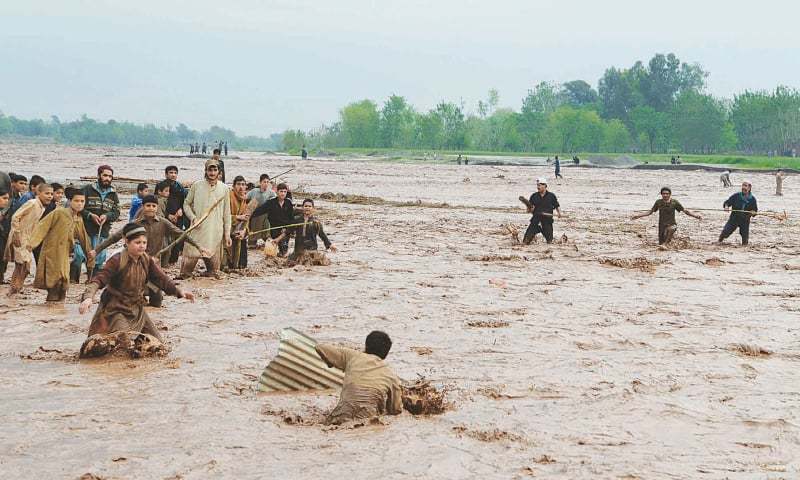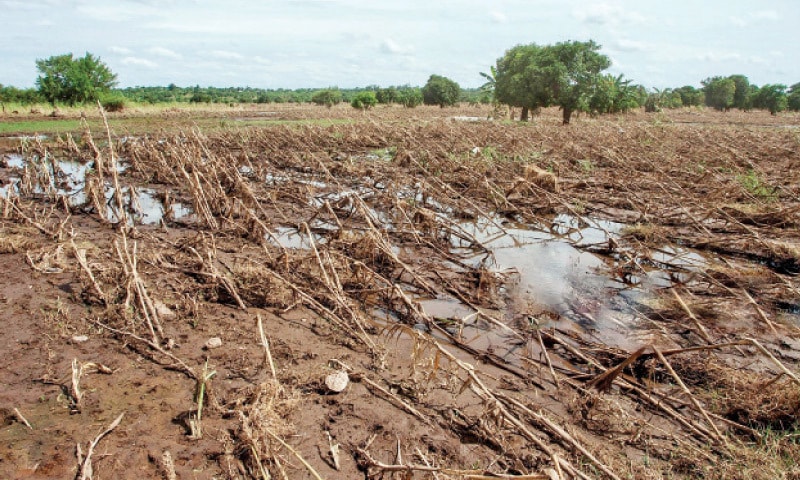Written by Kanza Mashal

Pakistan’s flood preparedness is weak. Since 1947, the country has faced 29 major floods. Each one brought loss, damage, and heartbreak for families across the country. Despite so many disasters, Pakistan still does not have strong disaster management. Most action happens only after a flood has already caused damage.
Today, the risks are greater than ever. Climate change is heating the planet. An endless stream of video evidence of melting glaciers has been pouring in from North Pakistan
Monsoon rains are heavier and for longer spells. These changes mean floods are not rare events anymore, they are becoming a dangerous cycle.
Without stronger flood precautions, early warning systems, and resilient infrastructure the whole country suffers every year. That is why flood preparedness matters. It teaches communities how to prepare for floods, how to stay safe during disasters, and how to recover quickly after.
Why is Pakistan at Risk?
In 2022, Pakistan saw its worst floods in history. Almost one-third of the country was under water. More than 33 million people were affected, and the losses went beyond $30 billion. Homes, schools, crops, and roads were destroyed. Many families are still rebuilding years later.
Now, in 2025, the threat has returned. Heavy monsoon rains and fast-melting glaciers have triggered flash floods in Khyber Pakhtunkhwa, Gilgit-Baltistan, and parts of Punjab. Rivers have overflowed, roads have been washed away, and villages have been cut off. The government has announced emergency measures, but rescue teams are struggling to reach remote areas
Floods are not new to Pakistan, but their scale and frequency have grown worse. The cause is defined both by natural and human action. Here is what you need to know:
“Its Raining, It’s Pouring”
Each year, the summer monsoon brings weeks of heavy rainfall. When drainage systems are weak or clogged with waste, even moderate rain can flood entire neighborhoods. Rainfall is however erratic. Making predictability difficult. When, where and how much are only answered once it arrives.
Glaciers No Longer Moving at a Glacial Pace
Pakistan holds the world’s largest number of glaciers outside of the polar regions. With 7,253 known glaciers, including the massive Siachen Glacier. Warming temperatures are melting them faster than before. This creates unstable lakes in the mountains. When the walls of these lakes burst, they cause glacial lake outburst floods called GLOF. These sudden walls of water can destroy homes and roads within minutes.
Chop Chop
A grade one student can tell you, trees hold the soil together. Yet over the past few decades, land mafia’s illegal, unregulated logging has stripped away much of Pakistan’s forests.
Without roots to anchor the soil, rainfall rushes straight downhill, creating flash floods and landslides. The root connection within forests is far more complex and crucial than you can imagine.
Concrete Over Concrete
Cities are expanding rapidly. Open ground is being replaced by concrete. Leaving little room for rainwater to soak into the earth. Remember when we said forest root connection is more important than you think?
With no where to go, water gathers in streets, markets, and homes. The result? Urban flooding that disables transport, businesses, and hospitals.
Local Governments are Snoring
Natural disasters turn deadly when systems fail. We have all the devices, the geo spatial mapping and international/local recruits. But corruption, poor planning, and lack of coordination dictate the status quo. Communities are often left to face disasters on their own, with little to no guidance.
Don’t Know, Don’t Care
Many people underestimate the danger and severity of flood waters. Or rather they choose not to. Without basic knowledge of flood safety, they take risks. This includes:
- crossing flooded roads
- building housing near (or even within) flood prone areas
- constructing unsafe buildings without the existence of by-laws
- Remaining unprepared for disasters
All these make rescue efforts harder and increases the number of casualties. Nature may trigger floods, but human mismanagement often decides how destructive they become despite the plethora of knowledge that could’ve been utilized.
What are the 5 Steps for Flood Preparedness?

Let’s face it, floods cannot always be avoided, but their damage can be reduced. Preparedness is key. It means knowing the risks, taking action before disaster hits, and responding wisely during and after.
1. Listen in and Listen Up!
Emergency Operations Center (NDMA) sends impact-based flood warnings. These are accessible via TV, radio, SMS, and their Disaster Alert app. It is important to follow weather forecasts, radio updates, and government alerts. Inflood-prone regions, even a few hours of advance notice can save lives.
2. Got an Emergency Plan?
Floods often strike with little warning. Having a family emergency plan means everyone understands where to go, who to call, and how to stay safe. Here is what your plan should include:
- Discuss your exit strategy. Where will you go if you must leave home?
- Choose a safe meeting point
- Does everyone know the emergency contact?
- Pick out a high, easily accessible gathering point (avoid bridges or riversides)
- Know where are the nearest shelters, schools, or safe buildings
- Practice evacuation with your family so no one panics
- Make sure you have an emergency kit
- Make sure someone is in charge of any pets and their safe removal (don’t leave them behind!)
3. Got All the Essentials?
When a disaster like this strikes, you won’t have time to run around looking for supplies. That’s why it is recommended to keep a Go Bag ready that you can grab in seconds if you need to leave home quickly.
We prepared a checklist!
- Water
- Dry food
- Important medicines and first aid supplies
- Flashlight
- Spare batteries
- Some clothing
- ID cards
- Emergency credit and debit cards (make sure you have some savings)
- Important documentation (property papers, passports etc)
Keeping this bag ready is a core element of flood preparedness.
4. Is your Home Protected?
Your home is your safe space, but during floods it can quickly turn into a danger zone. A few simple steps can help minimize the damage and buy you precious time.
- Clean drains and gutters regularly (you don’t want to be swimming in this over flow)
- If possible, use sandbags or barriers to stop water from entering
- Move furniture, electronics, and documents to higher floors
- Unplug appliances and switch off the main electricity supply
5. Don’t Risk It in a Flood
Floods can escalate within minutes. Knowing how to react in the moment can save your and your loved ones life. Here are some simple but important rules:
- If the authorities tell you to evacuate then do it immediately. Waiting even for a few minutes can trap you. Grab your essentials and go.
- Keep out of the floodwater. It might look shallow but even six inches of rushing water can knock you down. Just two feet is enough to sweep away a car!
- Always head for the higher ground whether indoors or outdoors as fast as possible.
- Try to stay connected by texting instead of calling. It saves your phone battery and keeps the networks from overloading when everyone’s trying to reach loved ones at once.
Flood’s Over, Now What?
The flood may be over, but the work isn’t done. Recovery takes careful steps to stay safe, protect your home, and track your losses.
- When the floodwaters go down, it’s tempting to rush back home to look at the damage. Don’t. Going back too soon can put you in danger from collapsing walls or contaminated water.
- Once you do return, stay alert. Weak buildings, gas leaks, snakes, and damaged power lines are all real risks.
- Cleaning up takes care. Floodwater is often full of sewage, chemicals, and sharp objects. Disinfect everything and boil your water before drinking it.
- Make sure to record your losses. Take photos of the damage for government aid.
- Learn from the experience. Think about what worked and what didn’t to improve your plan for the future.
Building a Culture of Preparedness
It is time to admit floods are going to be a part of life in Pakistan. We can’t stop the rain, but we can decide how we respond to it. Being prepared isn’t just about creating a go-bag or having an evacuation plan. It is about survival. It is about small habits that might have to be made that would create a big difference. Storing essentials, checking on neighbors, and knowing your exit strategy
Flood preparedness is not about fear. It is about readiness. Communities that prepare in advance recover faster, lose fewer lives, and face less long-term damage. When these families and communities take these steps together, panic turns into confidence. Preparedness works best when it becomes a shared way of life, not just a last-minute reaction. If we start building this culture now, we’ll be protecting not only ourselves, but also the generations to come.



